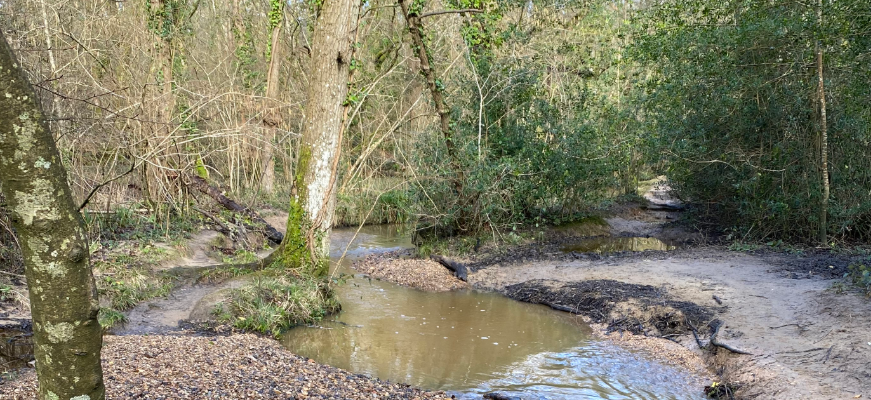Riparian Land Ownership

Who is a riparian landowner?
A riparian landowner is the owner of land that is next to a watercourse or has a watercourse running through or beneath it. Usually your house deeds will tell you whether you are responsible for a watercourse.
A watercourse is a natural or artificial channel above or below ground through which water flows.
You are likely to be a riparian landowner if your property/land:
- Has a watercourse running through or underneath it
- Has a watercourse running below it in a pipe or culvert
- Boundary is next to a watercourse (unless it is owned by someone else), or
- Has a garden/fence/hedge with a watercourse running alongside it
How much of a watercourse are you responsible for?
If a watercourse runs adjacent to your land (along a boundary or just outside of a boundary as set out by your Title Deeds) then you are likely to be responsible for the watercourse from the bank to the halfway point.

For example, owners A and B would each be responsible for the maintenance of their side of the watercourse. Unless Title Deeds state otherwise, it is presumed that each property owner owns to the centre line of the watercourse.
Your rights
- To receive a flow of water in its natural state, without undue interference in its quantity or quality
- To protect your property against flooding from the watercourse and to prevent erosion of the watercourse banks or any nearby structures
- A riparian owner usually has the right to fish in the watercourse, provided legal methods are used. A rod licence will usually be required from the Environment Agency
- A riparian owner can abstract a maximum of 20 cubic metres of water per day for the domestic purposes of their own household or for agricultural use (excluding spray irrigation) without a licence. Most other types of abstraction will require a licence from the Environment Agency
Your responsibilities
- To ensure that water is allowed to flow without obstructions
- To keep the bed and banks clear from obstructions
- To manage vegetation within the channel and on the banks
- To keep any structures, such as trash screens and culverts, clear from debris, silt and rubbish
More details
For more details on the rights and responsibilities of a riparian landowner, please visit the Environment Agency's guidance on owning a watercourse
Enforcement powers
To reduce the risk of flooding Southampton City Council encourages riparian landowners to work towards an effective watercourse system through a process of co-operation, liaison, advice and assistance wherever possible.
Under the Land Drainage Act 1991 and the Flood and Water Management Act 2010, Southampton City Council have the powers to serve notice on riparian landowners, for the removal of any obstruction or blockage to an ordinary watercourse. If for any reason these works are not carried out by a riparian landowner, Southampton City Council have the powers to undertake works and recover all associated costs.
The council will aim to resolve all problems through discussion with a landowner in the first instance and enforcement of legislation will only be used as a last resort.


